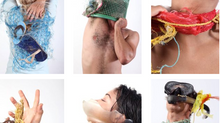Analogue Project - Photogram Research and how to create one
- Admin
- Sep 18, 2017
- 1 min read
What is a photogram?
Basically a photogram is a photographic image made without a camera by placing objects directly onto the surface of a light-sensitive material such as photographic paper and then exposing it to light.
History-
Some of the first photographic images made were photograms. William Henry Fox Talbot called these photogenic drawings, which he made by placing leaves and pieces of material onto sensitised paper, then left them outdoors on a sunny day to expose. This produced a dark background with a white silhouette of the object used.

credits- Google Images

The usual result is a negative shadow image that shows variations in tone that depends upon the transparency of the objects used. Areas of the paper that have received no light appear white; those exposed through transparent or semi-transparent objects appear grey.
So how exactly do we make these photograms?
In a darkroom, or a darkened room, objects are arranged on top a piece of photographic material, usually photographic paper. When the operator is satisfied with the arrangement, the photographic material is exposed with light, usually by switching on an enlarger or other artificial light source. The material is then processed, washed and dried.
Today we all went into the darkroom and created some photograms using photosensitive paper and other equipment under red light conditions.
On my next blog i will show you some of the photograms i created.




























Comments